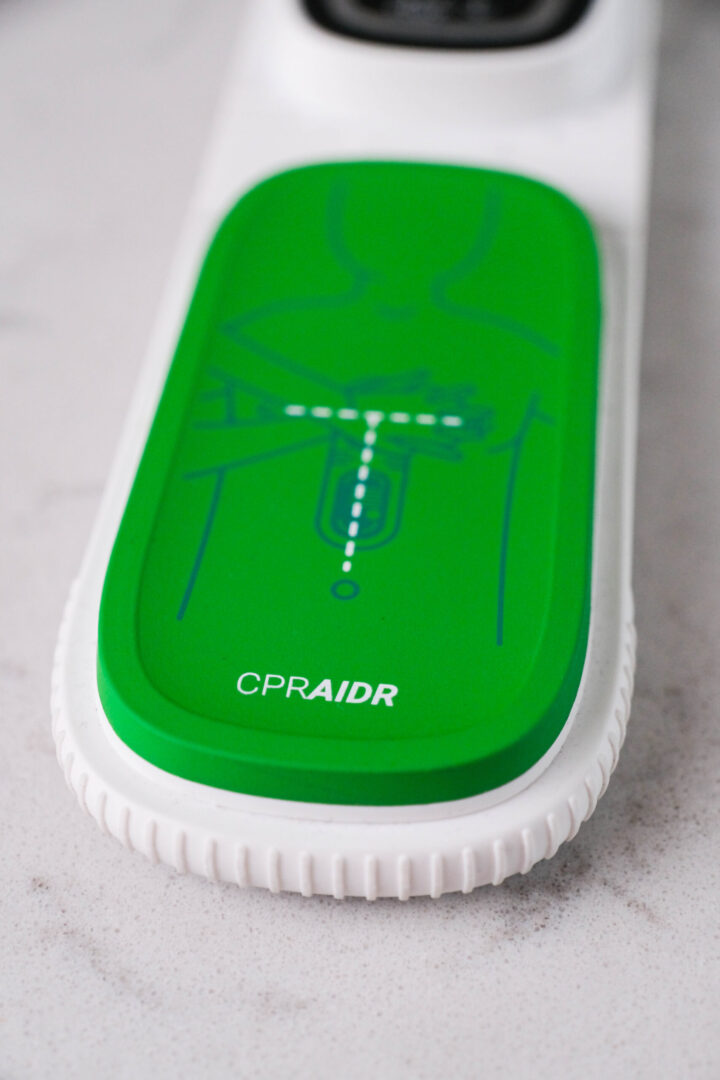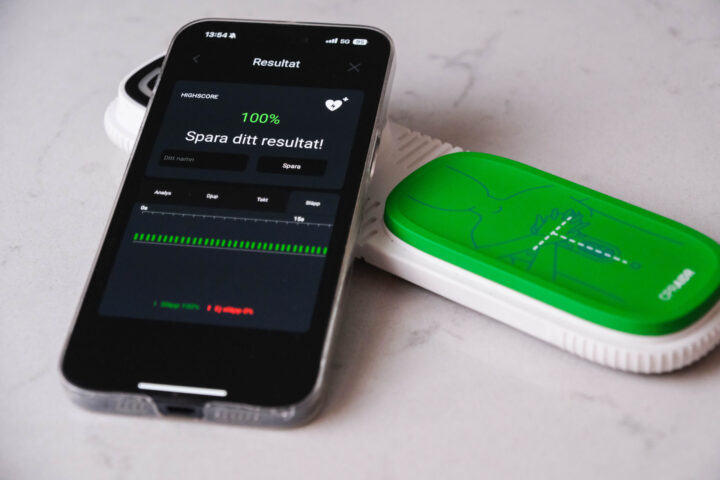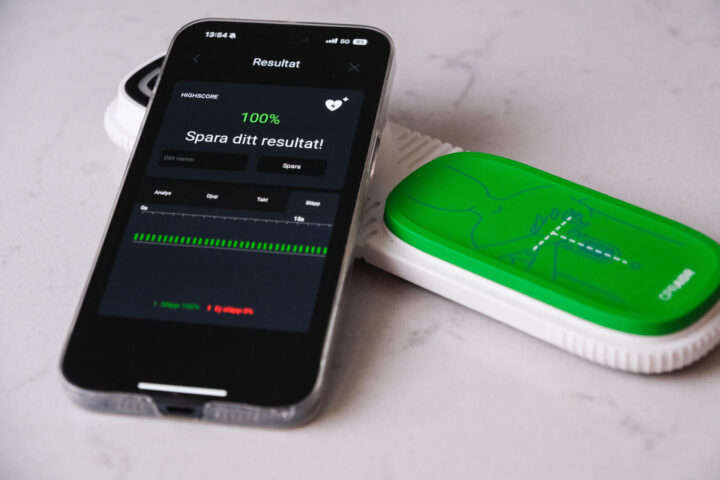From "How an audio-visual feedback system affects cardiopulmonary resuscitation performed by medically trained individuals"
by Simon Fredriksson & Martin Lindgren
Problem: Cardiac arrest is one of the most serious medical conditions in Sweden, affecting thousands of people each year, making it a significant public health challenge. Research shows that the quality of cardiopulmonary resuscitation (CPR) varies between different healthcare facilities, indicating a need for improved methods and tools to standardise and enhance the quality of CPR. Background: CPR Guide is a physical product intended to be placed on the chest of a person needing CPR to assist the rescuer in real-time by providing visual and auditory feedback on CPR performance. The tool adheres to international guidelines regarding the execution of CPR. Previous studies on similar CPR aids have shown positive effects.
Research question: "How does the use of the sensor-based CPR aid CPR Guide affect how well medically trained individuals perform CPR compressions?".
Research method: A controlled experiment was conducted at a clinical training centre at Södersjukhuset in Stockholm. During the experiment, 35 medically trained individuals performed CPR compressions on a training manikin equipped with built-in measurement functionality, with and without the aid of CPR Guide. This method enabled a direct comparison of CPR performances, with a particular focus on compression depth, compression rate, and complete chest recoil after each compression, which are three critical components for performing high-quality CPR. The collected data was analysed using a number of Wilcoxon Signed Ranks tests to compare the two performances.
Results: The analysis showed that the use of CPR Guide led to statistically significant improvements in compression depth and rate. The average percentage of compressions with the correct depth increased from 57.26% to 84.89%, and the average percentage of compressions with the correct rate increased from 65.20% to 82.20%. These results confirm findings from previous research on other sensor-based CPR aids. In contrast, the average percentage of compressions with complete chest recoil decreased from 86.54% to 70.11%. Conclusion: The use of the sensor-based CPR aid CPR Guide enhances the performance of medically trained individuals in terms of depth and rate but worsens performance regarding complete chest recoil.
From "How an audio-visual feedback system affects cardiopulmonary resuscitation performed by medically trained individuals"
by Simon Fredriksson & Martin Lindgren



